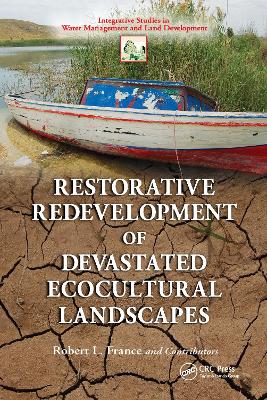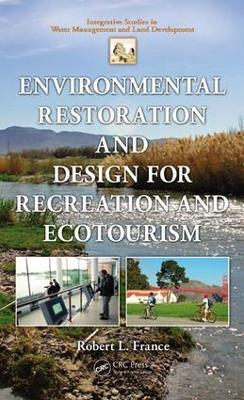Integrative Studies in Water Management & Land Development
5 total works
Restorative Redevelopment of Devastated Ecocultural Landscapes
by Robert L France
A fusion of ecological restoration and sustainable development, restorative redevelopment represents an emerging paradigm for remediating landscapes. Rather than merely fixing the broken bits and pieces of nature, restorative development advocates the reuse of devastated landscapes to improve the value and livability of a location for humans at the same time as effectively reinstating natural processes and functions. Restorative Redevelopment of Devastated Ecocultural Landscapes explores the use of this approach to address the long-term, sustainable reparation of the fabled marshlands of southern Iraq destroyed by Saddam Hussein, as well as numerous examples of other ecologically sensitive regions.
Case studies presented include:
- Southern marshlands Iraq
- Hula swamp, Israel
- Azraq Oasis, Jordan
- Las Vegas Wash, USA
- Xochimilco, Mexico
- Pantanal, Brazil
- Clark County Wetlands Park, USA
- Tonle Sap, Cambodia
- Lake Titicaca, Peru
- Nature Reserves, Jordan
The book reviews successfully-implemented and celebrated case studies from more than 15 countries around the world which, either in whole or in part, can offer valuable insight into the restorative development of the Iraqi marshlands as well as other devastated ecocultural landscapes. It presents practical approaches for sustaining the process of restoration efforts, both during and after the reparation work has been accomplished. The editor suggests solutions targeted for Iraq but that also have resonance in other regions devastated by conflict and natural disasters. He takes a synoptic or cross-system approach to problem solving when repairing large-scale landscapes that have been devastated by conflict or natural disasters such as tsunami-damaged Indonesia and earthquake-ravaged Haiti.
Environmental Restoration and Design for Recreation and Ecotourism
by Robert L France
Land Use Scenarios: Environmental Consequences of Development
by Alan W Shearer, David A Mouat, Scott D Bassett, Michael W Binford, Craig W. Johnson, Justin A Saarinen, Alan W Gertler, Julide Koracin, and Robert L France


